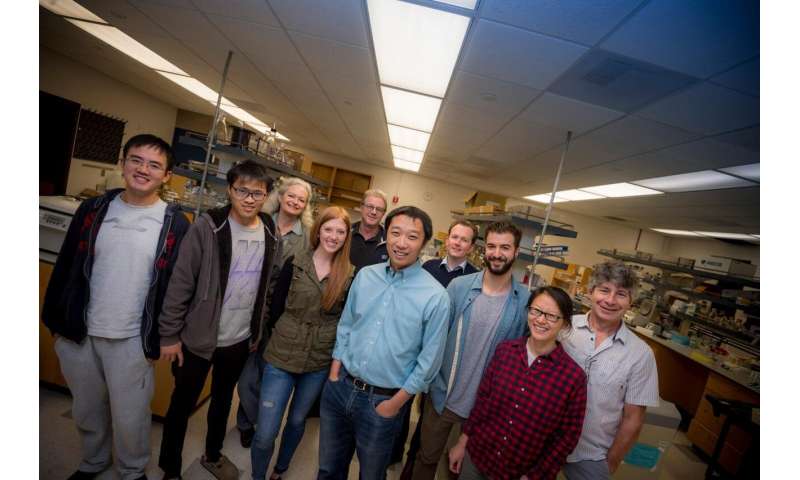.

UC San Diego biologists and bioengineers identified a master aging circuit that opens the door to genetically engineered prolonged life. Credit: Erik Jepsen/UC San Diego Publications.
Molecular biologists and bioengineers at the University of California San Diego have unraveled key mechanisms behind the mysteries of aging. They isolated two distinct paths that cells travel during aging and engineered a new way to genetically program these processes to extend lifespan.
The research is described July 17 in the journal Science.
Our lifespans as humans are determined by the aging of our individual cells. To understand whether different cells age at the same rate and by the same cause, the researchers studied aging in the budding yeast Saccharomyces cerevisiae, a tractable model for investigating mechanisms of aging, including the aging paths of skin and stem cells.
The scientists discovered that cells of the same genetic material and within the same environment can age in strikingly distinct ways, their fates unfolding through different molecular and cellular trajectories. Using microfluidics, computer modeling and other techniques, they found that about half of the cells age through a gradual decline in the stability of the nucleolus, a region of nuclear DNA where key components of protein-producing "factories" are synthesized. In contrast, the other half age due to dysfunction of their mitochondria, the energy production units of cells.
The cells embark upon either the nucleolar or mitochondrial path early in life, and follow this "aging route" throughout their entire lifespan through decline and death. At the heart of the controls the researchers found a master circuit that guides these aging processes.

Right, movies of representative mode 1 (top) and mode 2 (bottom) aging cells (encircled) are played sequentially. Green and red fluorescence reflect nucleolar and mitochondrial integrity in the cells during aging. Increase in green fluorescence represents loss of nucleolar integrity whereas decrease in red fluorescence represents loss of mitochondrial integrity. Left, real-time quantification of fluorescence plotted within a 3D aging space, in which z-axis represents the percentage of lifetime. After the aging trajectories of the two representative cells were quantified and plotted, trajectories of a population of isogenic wild type cells were plotted in the space (mode 1: red; mode 2: blue). Credit: Hao Lab, UC San Diego.
"To understand how cells make these decisions, we identified the molecular processes underlying each aging route and the connections among them, revealing a molecular circuit that controls cell aging, analogous to electric circuits that control home appliances," said Nan Hao, senior author of the study and an associate professor in the Section of Molecular Biology, Division of Biological Sciences.
.../...
.













































